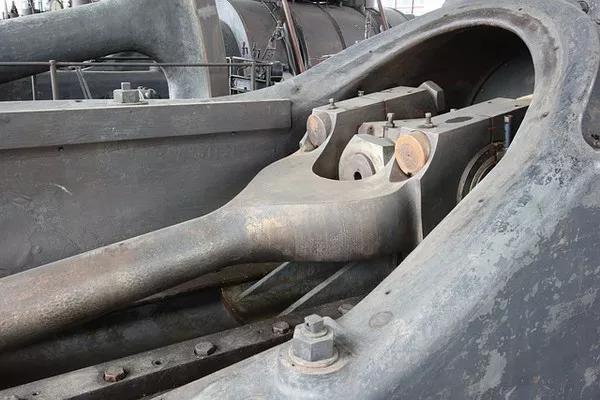Air compressors are essential tools in various industries, providing a versatile source of power for a wide range of applications. Among the types available, central pneumatic air compressors stand out for their efficiency, power, and adaptability. In this article, we will delve into the intricacies of using a central pneumatic air compressor effectively and safely, exploring its applications, maintenance, and best practices.
Understanding Central Pneumatic Air Compressors
A central pneumatic air compressor is a dynamic machine that converts electrical energy into compressed air, which can then be used for tasks such as inflating tires, operating pneumatic tools, and more. It operates by drawing in atmospheric air, compressing it through a series of components, and storing it in a tank for later use. One of the standout features of central pneumatic compressors is their ability to deliver a consistent stream of high-pressure air, making them a preferred choice for industrial and commercial applications.
Safety First
Before diving into the specifics of using a central pneumatic air compressor, it’s paramount to prioritize safety. Here are some crucial safety measures to keep in mind:
Proper Ventilation: Always operate the compressor in a well-ventilated area to prevent the buildup of potentially harmful fumes or gases.
Protective Gear: When using the compressor, wear appropriate safety gear, including safety glasses, hearing protection, and work gloves. This safeguards you from potential hazards and ensures a safe working environment.
Read the Manual: Familiarize yourself with the manufacturer’s instructions and recommendations. The manual provides valuable insights into the compressor’s specifications, operating procedures, and maintenance guidelines.
Pressure Relief: Before conducting any maintenance or adjustments, ensure that the compressor is depressurized. This prevents accidental releases of high-pressure air.
Operating a Central Pneumatic Air Compressor
1. Initial Setup
Place the Compressor: Position the compressor on a level surface with ample space around it for ventilation and ease of access.
Electrical Connection: Plug the compressor into a grounded electrical outlet that can handle the required voltage and current. Avoid using extension cords, as they can cause voltage drops and damage the compressor’s performance.
Intake Air Filter: Check and clean the intake air filter regularly to ensure proper air flow and prevent debris from entering the system.
2. Starting the Compressor
On/Off Switch: Most central pneumatic air compressors have a power switch. Turn it on to begin the startup process.
Tank Pressure: The compressor’s tank pressure gauge will show the current pressure level. If the tank is empty, the compressor will automatically start filling it.
Auto Shut-Off: Once the tank reaches its maximum pressure (as indicated on the pressure gauge), the compressor’s motor will automatically shut off. Some compressors might have a manual shut-off valve, which you can close to stop the filling process.
3. Using the Compressed Air
Attachments: For various applications, connect appropriate attachments to the air outlet valve on the compressor. This can include air hoses, pneumatic tools, tire inflators, and more.
Air Pressure Adjustment: Different tasks require different air pressures. Adjust the pressure using the pressure regulator knob on the compressor. Consult the manufacturer’s guidelines for recommended pressure levels.
Operating Pneumatic Tools: When using pneumatic tools, ensure they are well-lubricated, as this prolongs their lifespan and enhances their efficiency. Connect the tool to the air hose, adjust the pressure, and you’re ready to work.
4. Maintenance and Longevity
Drain Moisture: Compressed air can accumulate moisture, which can lead to corrosion and damage. Regularly drain the moisture from the compressor’s tank using the tank drain valve.
Oil Levels: Some central pneumatic compressors require regular oiling for proper lubrication. Check the manufacturer’s guidelines to determine the oil type and schedule.
Cleanliness: Keep the compressor clean and free of debris to maintain optimal performance. Wipe down the exterior and ensure air vents are unobstructed.
Inspections: Periodically inspect the compressor for signs of wear, leaks, or damage. Address any issues promptly to prevent further complications.
Applications of Central Pneumatic Air Compressors
Central pneumatic air compressors find applications in various industries due to their versatility and power. Some common applications include:
Pneumatic Tools: These compressors power a wide range of pneumatic tools such as nail guns, impact wrenches, and paint sprayers, enhancing efficiency and precision.
Tire Inflation: Central pneumatic compressors are excellent for quickly inflating tires on vehicles, bicycles, and other equipment.
Cleaning and Dusting: Compressed air is used to clean surfaces and remove dust from hard-to-reach areas.
Spray Painting: They provide a consistent stream of air for spray painting applications, ensuring an even and smooth finish.
Construction and Manufacturing: In industries like construction and manufacturing, these compressors operate heavy machinery and equipment.
Conclusion
Central pneumatic air compressors are indispensable tools that offer a reliable source of compressed air for various applications. By understanding their operation, adhering to safety protocols, and conducting regular maintenance, you can ensure efficient and safe usage. Whether you’re a professional in an industrial setting or a hobbyist working on DIY projects, a central pneumatic air compressor can significantly enhance your capabilities and productivity.

